So yesterday I had to drive for an hour down to Carlow on a special mission for Santa Claus, which turned out to be a disaster. With Ryan and his older cousin Scott in the car I was determined not to make the trip a complete waste, so I checked my Interactive Ruins Map to check out what sites I had not yet visited in the area. Well I can tell you that there is quite a few in the Carlow area. Nearest was the Neolithic Portal Tomb known as Brownshill Dolmen. Its proper name is the Kernanstown Dolmen or ‘Dolmain Chnoc an Bhrúnaigh’ in Gaelic. It later came to be known Brownshill Dolmen after a previous landowner. This was my first time there and I was extremely impressed by not only the structure, but how well it has been taken care off. I would seem to be a popular site for tourists and is well signposted. There is even a purpose built car park for visitors with some information boards at the enterance to the site. It is a bit of a walk to the monument which can be seen from the roadside perched nicely on the horizon. What really impressed me was the paved pathway which leads you across the farm land on which the Tomb resides. Thankfully there was no need for fence hoping, or stomping through marshlands to get to the site. Both the monument and the path are fenced off which not only protects the surrounding farm land but it also protects this rare heritage site. If only this could be done for the many other equally worthy sites around the country.
It is believed to have been built sometime between 4000 and 3000 BC by some of the early Neolithic settlers in Ireland. The granite capstone is believed to be the largest of its kind in Europe and is estimated to weigh a whopping 150 tons. It is 6.1m in length and 4.7m wide, with a thickness of 2m. The capstone is thought to have been covered by an earthen mound with a gate stone blocking the entrance. Unfortunately no trace of this mound has survived. Earlier on in the year I came across another Neolithic tomb in the Phoenix Park in Dublin, it is much smaller but you can read about it at Knockmaroon Cromlech. To truly appreciate the sheer size of this ancient monument you really do need to pay a visit and experience it for yourself. I got my two little apprentice Ruin hunters to step into a shot just to give a true idea of how bloody big this thing actually is. It is known as a portal tomb due to the two portal stones on which the cap stone rests at one end. There is also a third stone a (prostrate stone), which propped up the cap stone on the other side and which may have originally been standing upright. Both portal stones are about 2m in height. In between the portal stones you find the door stone, which faces to the east and would have been the entrance to the tomb.. Although the side stones of this once magnificent chamber have long since gone, there is a standing stone resting to the North of the monument which may be the remains of a former façade or forcourt. According to records this tomb is one of three ‘dolmens’ in the locality, so I guess that I will be kept busy hunting for them in the near future.
There is very little solid information on Brownshill, due to the fact that the site has surprisingly never been excavated. We do know that it predates the Celts by a few thousand years. To this end the true extent of the chamber cannot be determined. We can only speculate about the origins of this fascinating ruin and use data collected from other similar tombs to make an educated guess as to its purpose? Aside from it being used as a burial chamber, some say that it was a place for religious ceremony and possibly even human sacrifice, some suggest that it was a sort of border marker. But until it has been properly excavated I guess we will never truly know? So what about the people who built this monstrous structure? The stone age settlers of this period had moved on from the hunter/gatherer lives of their ancestors and were the first to begin farming of the land. In addition to Dolmen’s these people used Moates or artificial mounds. Inside many of these tombs excavations have uncovered many various skeletal remains including burnt remains in burial urns, which would suggest that these people also practised the cremation of corpses just like we do today in many cultures and societies.
Some surviving stones from these monuments have been found to have been inscribed with Oghaim writing, which would have not occurred until the 3rd or 4th century A.D. This would suggest that these ancient monuments were re-used by later generations. In the years that followed these Dolmen tombs were commonly referred to as ‘Druids Alters’. Then there is the connection to an ancient legend of Dermot and Grainne, which tells of Grainne whom was due to marry the legendary Fionn MacCumhaill. Unfortunately she was in love with another, so she and Diarmuid eloped and went on the run. It is said that Diarmuid erected a stone bed each night for them to sleep on. Hence the Dolmen tombs also became known as ‘The bed of Diarmuid & Grainne.
It is quite mind boggling to imagine how these supposed primitive people would have constructed such a structure. Well there are three reasonable theories as to how they might have achieved such feats, but again these are all just educated guesses. The first theory on the building of such a structure is that they did not move the capstone at all. They could have dug holes where the uprights were to go, inserted these and then dug away the surrounding earth, leaving a Dolmen looking like it is today. Personally I would discount this theory due to the fact that these tombs were normally covered by a mound, which sort of defeats the purpose of this theory. Our second theory suggests they might have erected the uprights and then used a ramp of earth, stones and timber, upon which they could have levered the capstone into position. Bloody hard work even by todays standards, but I guess it would be possible. Then finally our third theory is that they could have levered up one edge of the capstone and crammed in earth and stones, raising it. If they continued this all round the capstone would eventually have risen to the level of the uprights and could then I have been prised into position. Again whilst possible, this would also take some serious amount of work to achieve. Whatever they did to achieve the finished result is still only speculation, all I do know is that its great to see these structures still standing and to find one that has been so well cared for. If you are in the area I would highly recommend that you stop of and pay a visit to one of the best heritage sites in the area.
For more of my images, why not visit my Website,or follow me on Facebook, Instagram or Twitter.

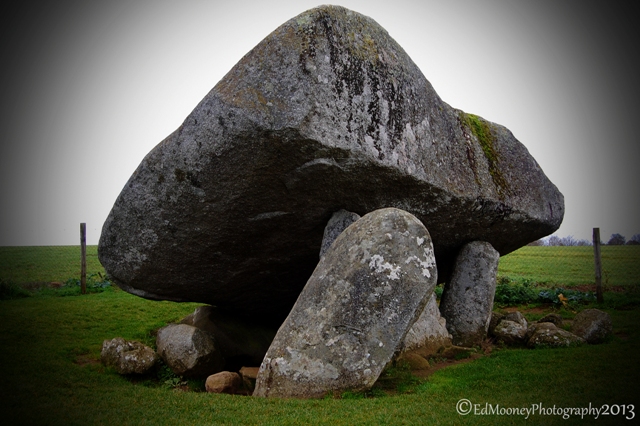
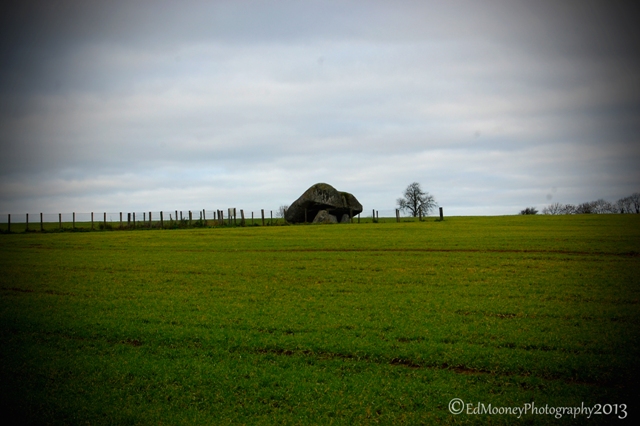
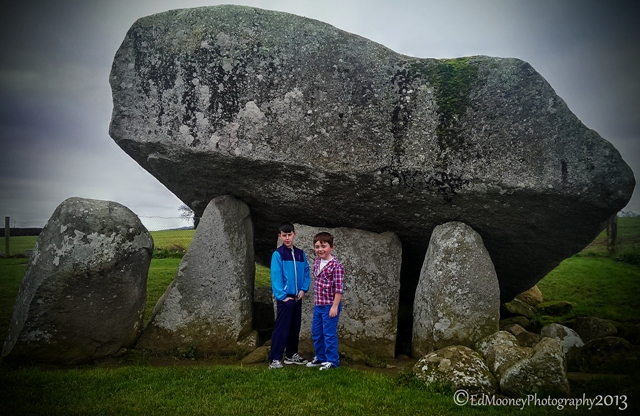

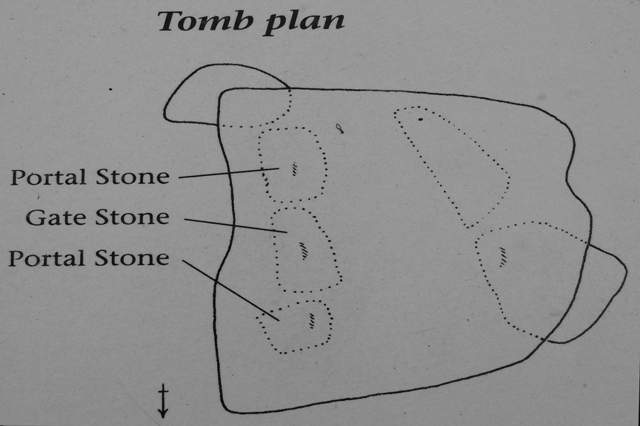
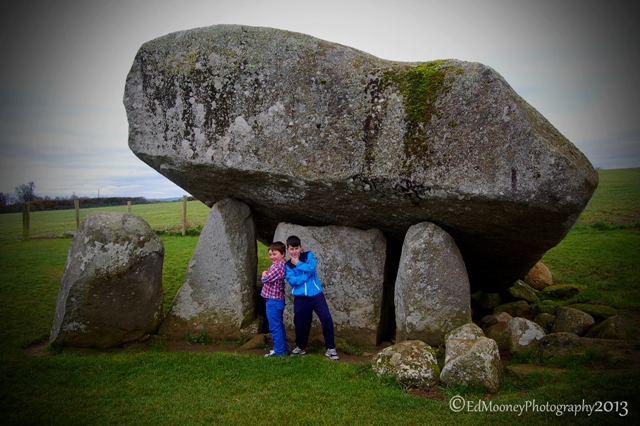
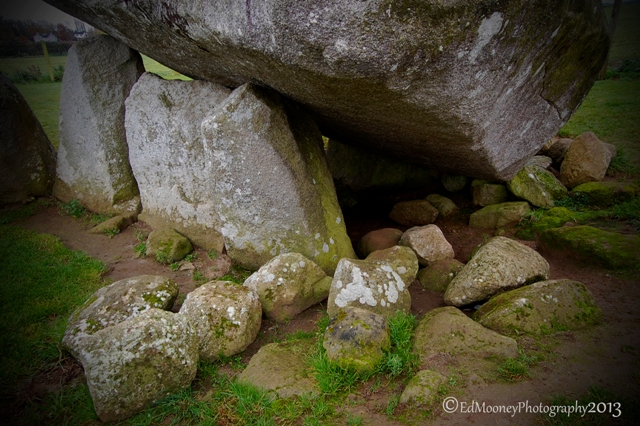
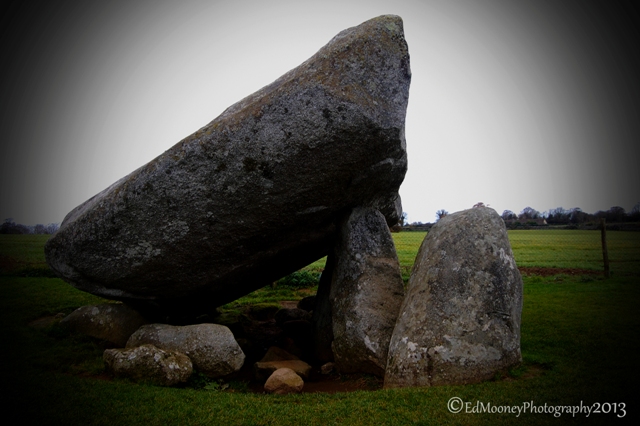
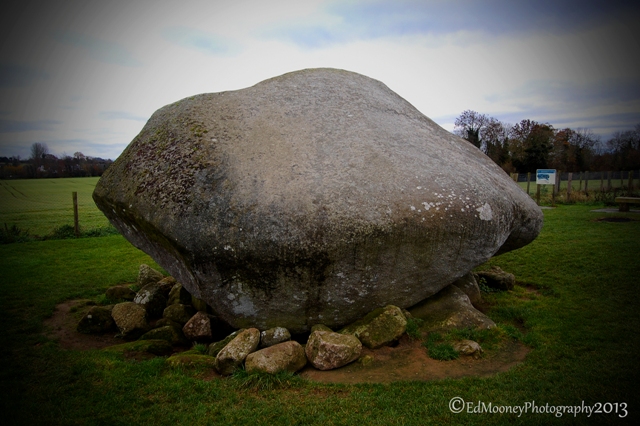



The size of the cap-stone is indeed boggling. Great to have the boys handy to give a sense of scale. The second photo with them in is especially pleasing.
LikeLike
Thanks Tish 🙂
LikeLike
See you’ve been following the Old Oswestry situation on Heritage Jnl. Have just written a piece for them there and another on my blog. One has to stand by one’s monuments, doesn’t one.
LikeLike
The tomb of rocks..has a green grass all around.
Artistically the dead lies, under a great mound
No. Nothing seems to move..no one hears any sound
trees are far away too..giving space to the ground
watching from close and far, camera goes to click
time has passed away..tick tick tick
LikeLike
🙂 Lovely, 🙂
LikeLike
Great shots 🙂
LikeLike
Thank you, so glad that you liked them, 🙂
LikeLike
we all loved, each one 🙂
LikeLike
The photos give the illusion that the rocks could tumble at any given moment.
LikeLike
Not a hope Sue, They are as sturdy as a rock, excuse the pun. I would say that even long after my house has fallen down, this Dolmen will still be standing, 🙂
LikeLike
Now you will have me thinking about how this was achieved, personally I think we all are missing something here just not sure what it is. Okay here’s my theory how about using a fulcrum. Once it’s placed under the capstone (an event all in itself) load stone on one side and lift, then repeat the action on the other side. The fulcrum point moves back and forth on a levering action. It would be like a titter totter except instead of a single center, there would be opposing centers (only separated only by a small gap. This action could accomplish the same work in a much shorter period. What do you think?
LikeLike
Second thought about how to start this action in the first place. The stone itself might have been there from the beginning. The first thing to have done would be to dig a hole under the center portion but for the entire width (probably large enough for a man to crawl through). Then the load could be stacked on one end while the digging action occurred on the opposite side. Once that hole was slightly deeper then the pivot point levering itself would start and the whole process could begin. So if my theory hold any water there should be some slight wear marker on the underside of the stone close to the center point from the action of moving the fulcrum point.
LikeLike
Fulcrum, Now there is a word I have not heard since my physics classes in school all them years ago. 🙂 Both very interesting and plausible theory’s. I didn’t notice any wear marks on the stone but then these could have been worn away by the weather over the centuries. I will try to have a closer look on my next visit, 🙂
LikeLike
Or they could have simply used their magic? These people knew much more than we ever will. BTW Ed, it’s snowing on your site…nice touch! At first I thought there was something wrong with my screen, hehe!
LikeLike
Ah yes, maybe a few druids raised it with their wands, lol. The snow just keeps appearing on the blog each December, I set it up one year and it keeps coming back 🙂
LikeLike
I believe Tolkien’s elves used to ‘sing’ their power. I can imagine how more primitive onlookers might have interpreted it this way; I’m sure these builders would sing while they worked, not just for morale, but for timing and to help them work together as a team. Building such impressive structures by any means is magic indeed!
LikeLike
🙂
LikeLike
I would love to see sites like this. So old and mysterious, they almost make my skin crawl. B&W as well as color would work for this. Also, I’d be interested to see some worm’s-eye perspectives here. Some special tripods like the Vanguard line allow stable setup very close to the ground. Once again thanks for sharing, Ed! 🙂
LikeLike
Thanks R.C. Im actually planning a return visit, i think some night shots would look really well. and give me a chance to play with the light. Normally when I do a low shot i just get down on my belly and shoot away. Sometimes ya just have to crawl around in the dirt to get an interesting shot, 🙂
LikeLike
That is a very impressive monument! Nice to get the perspective from your children standing next to it. I’m glad to know it’s being looked after – like you say, it would be good to see more ancient sites preserved in this way.
LikeLike
It really is impressive how they managed to build these magnificent monuments!
LikeLike
Ahhh! I’ve been there, it’s in good old Ireland! I was like “hey, those rocks look awfully familiar…”
LikeLike
LOL, thats excellent, 🙂
LikeLike
Wowza. That is all.
LikeLike
Ed, I am stunned by not only the size, but the fact that this tomb has not been excavated! How had it not been ruined by tomb raiders and others who don;t know better? amazing!
LikeLike
Sure is, and their is plenty more in the area, which I shall be exploring once xmas is out of the way 🙂
LikeLike
Ed, very interested to have a look at your site. I live in Cumbria, northwest England, where there are many neolithic Stone Circles in places of absolute splendour; I just can’t get my head round them, they entrance me. Thanks very much for the like.
LikeLike
My pleasure Adrian, glad you liked them. I hope to get across the waters and explore some of the heritage, if I ever get finished over here. For every site I blog about end up finding three new ones, 🙂
LikeLike
Nice pictures
LikeLike
Pingback: 2013 My Photo-Blog Adventure | EdMooneyPhotography
Thank you for sharing valuable information. Nice post. I enjoyed reading this post. The whole blog is very nice found some good stuff and good information here Thanks..Also visit my page Car Service Oswestry
LikeLike
Thank You 🙂
LikeLike
Pingback: Rework Wednesday 29 | EdMooneyPhotography
Pingback: I know I’m probably over-reacting but | Tegfan, Dinas Cross
I sincerely enjoy seeing your discoveries, I love finding these megalithic wonders left behind by a vast civilization which in my opinion was the first one world order, the original to which I believe was very high in their technologies when compared to modern man which hasn’t the first clue how to rebuild much of any of these monuments that are found throughout this earth many still yet to be discovered not to mention the vastly undiscovered civilizations resting beneath the massive oceans and sea’s of our planet. There is no doubt that earth has always been visited by civilizations in our extreme ancient past including our present day from beings exterior to our galaxy, too much for governments to suppress as they hide the truth from human kind. I will hush now as I could write a book on my beliefs and the facts to which I can back it up with. Shalom and blessings my friend, Ed. Smiles. Amazing isn’t even close to how amazing your photo’s are to me.
LikeLiked by 1 person
Glad to hear it Richard, we seem to be on the same wavelenght so to speak 🙂
LikeLike
I certainly do agree with you Ed. Have a blessed day my friend. Severe Thunderstorms here again today, we seem to only be getting the out skirts of the storms here from this latest Typhoon in our area of the Philippines. For me, its a good time catching up on some much needed rest. Shalom
LikeLiked by 1 person
Pingback: Capturing History Challenge Week 12 | Ed Mooney Photography